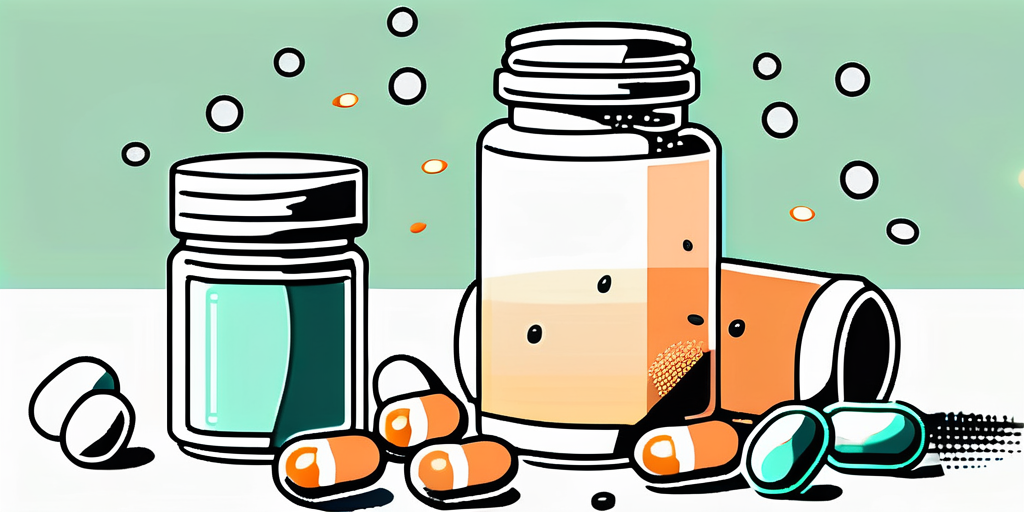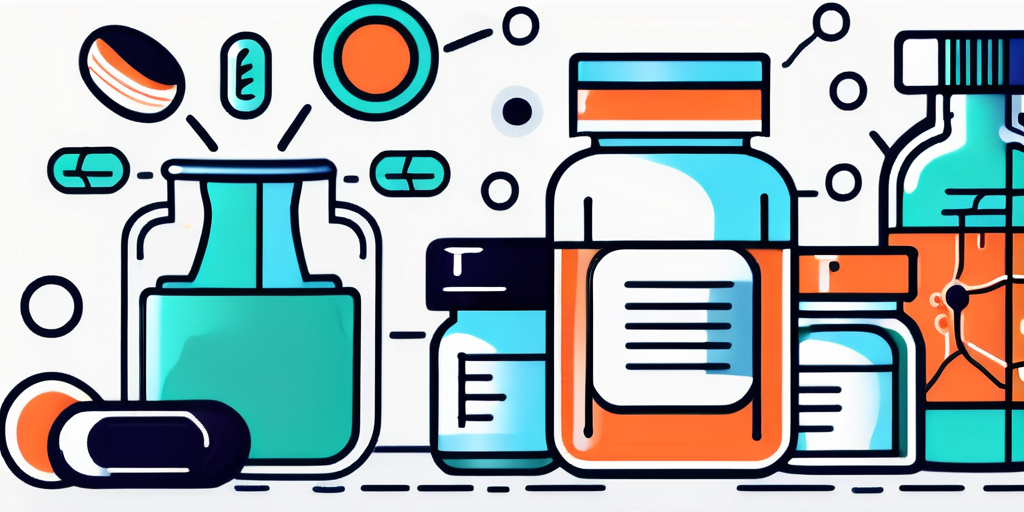Low Dose Naltrexone (LDN) has gained attention in recent years as a potential treatment for pain relief. This medication, derived from the opioid antagonist Naltrexone, is typically prescribed in lower doses compared to its conventional use. LDN works by modulating the body’s immune system and promoting the release of endorphins, which are natural painkillers within the body. This article explores the benefits of using LDN as an alternative pain relief option and its advantages over more traditional medications.
Understanding Naltrexone and Its Uses
Naltrexone is an opioid receptor antagonist that was initially approved by the FDA for treating alcohol and opiate addiction. By blocking the effects of opioids in the brain, Naltrexone helps individuals overcome cravings and reduce dependency. However, recent research has indicated that when used in lower doses, Naltrexone can have a different therapeutic effect on the body.
What is Naltrexone?
Naltrexone is a medication that belongs to a class of drugs known as opioid antagonists. It works by binding to the opioid receptors in the brain and blocking the effects of opioids. By doing so, Naltrexone helps prevent the feelings of euphoria and pleasure associated with opioid use, making it an effective treatment option for addiction.
Traditional Uses of Naltrexone
Traditionally, Naltrexone is prescribed in higher doses for individuals struggling with opioid and alcohol addiction. It aids in reducing cravings and preventing relapse by blocking the pleasurable effects of opioids and alcohol. While Naltrexone has been successful in this regard, researchers have discovered that low doses of the medication can have additional benefits, particularly in pain management.
When used in lower doses, Naltrexone has shown promise in managing chronic pain conditions. Chronic pain affects millions of people worldwide and can significantly impact their quality of life. The traditional approach to pain management often involves the use of opioids, which can lead to dependence and addiction. However, Naltrexone offers a non-opioid alternative that can effectively alleviate pain without the risk of addiction.
Studies have found that low-dose Naltrexone can modulate the immune system and reduce inflammation, which are key factors in many chronic pain conditions. By targeting the immune system, Naltrexone helps regulate the body’s response to pain and promotes healing. This makes it a valuable tool in the treatment of conditions such as fibromyalgia, multiple sclerosis, and autoimmune disorders.
In addition to its pain-relieving properties, low-dose Naltrexone has also shown potential in treating certain psychiatric conditions. Research suggests that it may be beneficial in managing symptoms of depression, anxiety, and post-traumatic stress disorder (PTSD). By modulating the brain’s neurotransmitters, Naltrexone can help restore balance and improve mood in individuals with these conditions.
Furthermore, Naltrexone has been explored as a potential treatment for various autoimmune diseases. Autoimmune diseases occur when the immune system mistakenly attacks healthy cells and tissues. By modulating the immune response, Naltrexone may help reduce the severity of symptoms and slow down disease progression in conditions such as rheumatoid arthritis, Crohn’s disease, and psoriasis.
It is important to note that the use of low-dose Naltrexone for these off-label purposes is still being researched, and further studies are needed to establish its efficacy and safety. As with any medication, it is crucial to consult with a healthcare professional before considering Naltrexone for any condition other than addiction.
The Science Behind Low Dose Naltrexone for Pain Relief
Low Dose Naltrexone (LDN) has gained attention in recent years for its potential in pain relief. This medication, when administered in low doses, works by stimulating the production of endorphins in the body. Endorphins are natural opioids that help regulate pain and promote feelings of well-being.
How Low Dose Naltrexone Works
When LDN is taken, it temporarily blocks the opioid receptors in the brain. This blocking action triggers a feedback mechanism in the body, leading to an increase in the production and release of endorphins. By encouraging the release of endorphins, LDN ultimately leads to pain relief.
Endorphins, often referred to as the body’s natural painkillers, play a crucial role in pain management. These neurotransmitters bind to the opioid receptors in the brain and spinal cord, reducing the transmission of pain signals. When the production and release of endorphins are increased, individuals may experience a reduction in pain intensity and an improved overall sense of well-being.
The Role of Endorphins in Pain Management
Endorphins are not only involved in pain relief but also contribute to various aspects of well-being. These natural opioids are known to produce feelings of pleasure, euphoria, and relaxation. They can also help alleviate symptoms of anxiety and depression, promoting a positive mental state.
In addition to their pain-relieving properties, endorphins have been found to enhance the immune system. They can modulate the inflammatory response, reducing inflammation and promoting healing. This immune-modulating effect may contribute to the overall therapeutic benefits of LDN in pain management.
Furthermore, endorphins have been shown to play a role in stress reduction. When released in response to stress, they can help dampen the stress response and promote a sense of calmness. By regulating the body’s stress response, endorphins may indirectly contribute to pain relief, as stress can exacerbate pain symptoms.
It is important to note that while LDN shows promise in pain management, it is still an area of ongoing research. The exact mechanisms by which LDN and endorphins interact to provide pain relief are not fully understood. However, the growing body of evidence suggests that this approach may offer a novel and effective option for individuals seeking relief from chronic pain.
The Advantages of Low Dose Naltrexone Over Traditional Pain Medications
When it comes to managing chronic pain, low dose Naltrexone offers several advantages over traditional pain medications. Not only does it provide effective pain relief, but it also minimizes the risk of side effects and dependency that are commonly associated with opioids.

Comparing Side Effects
One of the significant advantages of low dose Naltrexone is its minimal side effects compared to traditional pain medications. Opioids, for example, can cause drowsiness, constipation, and potential addiction. These side effects can significantly impact a person’s quality of life and overall well-being.
In contrast, low dose Naltrexone has been reported to have milder side effects, including mild headaches or vivid dreams. These side effects are generally well-tolerated and tend to subside over time. This means that individuals can experience pain relief without the burden of debilitating side effects.
Moreover, low dose Naltrexone does not impair cognitive function or cause sedation, allowing individuals to carry on with their daily activities without feeling drowsy or mentally foggy.
The Issue of Dependency and Addiction
Dependency and addiction are significant concerns when it comes to treating chronic pain with traditional opioids. Due to their addictive properties, long-term use of opioids carries the risk of dependency or substance abuse. This can lead to a vicious cycle of increasing dosage requirements and potential withdrawal symptoms when trying to discontinue the medication.
In contrast, low dose Naltrexone does not carry the same risk of dependency or addiction. It works by blocking the opioid receptors in the brain, preventing the euphoric effects that can lead to addiction. This makes low dose Naltrexone a safer option for long-term pain management, especially for individuals who are at a higher risk of developing substance abuse issues.
Furthermore, low dose Naltrexone has been found to have a positive impact on the endogenous opioid system, which is responsible for regulating pain perception. By modulating this system, low dose Naltrexone can help restore the body’s natural pain control mechanisms, reducing the reliance on external pain medications.
Additionally, low dose Naltrexone has been shown to have immunomodulatory effects, meaning it can regulate and balance the immune system. This is particularly beneficial for individuals with autoimmune conditions, as it can help reduce inflammation and alleviate pain associated with these conditions.
It is important to note that low dose Naltrexone should be used under the guidance of a healthcare professional who can determine the appropriate dosage and monitor its effectiveness. As with any medication, individual responses may vary, and it is essential to discuss the potential benefits and risks with a healthcare provider.
In conclusion, low dose Naltrexone offers several advantages over traditional pain medications. Its minimal side effects, lack of dependency and addiction risk, and potential immunomodulatory effects make it a promising option for individuals seeking long-term pain relief. By considering low dose Naltrexone as part of a comprehensive pain management plan, individuals can potentially experience improved quality of life and reduced reliance on opioids.
Conditions That Can Benefit from Low Dose Naltrexone
Chronic Pain Conditions
Low dose Naltrexone has shown promise in treating various chronic pain conditions, such as fibromyalgia, neuropathic pain, and inflammatory conditions like rheumatoid arthritis. Its ability to modulate the immune system and stimulate the production of endorphins can offer significant pain relief for individuals suffering from these conditions.

Autoimmune Diseases and Inflammation
In addition to chronic pain conditions, low dose Naltrexone has also been studied for its potential benefits in autoimmune diseases. Conditions like multiple sclerosis, Crohn’s disease, and Hashimoto’s thyroiditis have shown positive responses to LDN therapy. By reducing inflammation and rebalancing the immune response, LDN can effectively alleviate symptoms and improve the quality of life for patients.
The Process of Starting Low Dose Naltrexone
Consulting Your Doctor
Before starting low dose Naltrexone, it is advisable to consult with a healthcare professional. They can evaluate your specific condition, review your medical history, and determine the appropriate dosage for your needs. Your doctor will also be able to monitor your progress and adjust the dosage if necessary.

Dosage and Administration
Low dose Naltrexone typically ranges between 1.5 and 4.5 milligrams, taken orally once a day. It is important to follow your doctor’s instructions regarding dosage and administration. Since LDN has a unique mechanism of action, it is essential to adhere to the prescribed dosage for optimal pain relief and therapeutic results.
In conclusion, low dose Naltrexone offers several benefits for individuals seeking pain relief. With its unique ability to stimulate the production of endorphins and modulate the immune system, LDN provides an alternative to traditional pain medications and opioids with reduced side effects and lower risk of dependency. LDN has also shown promising results in treating chronic pain conditions and autoimmune diseases. If you are considering LDN as a pain management option, consult with your doctor to determine if it is suitable for your needs and to establish the appropriate dosage.


